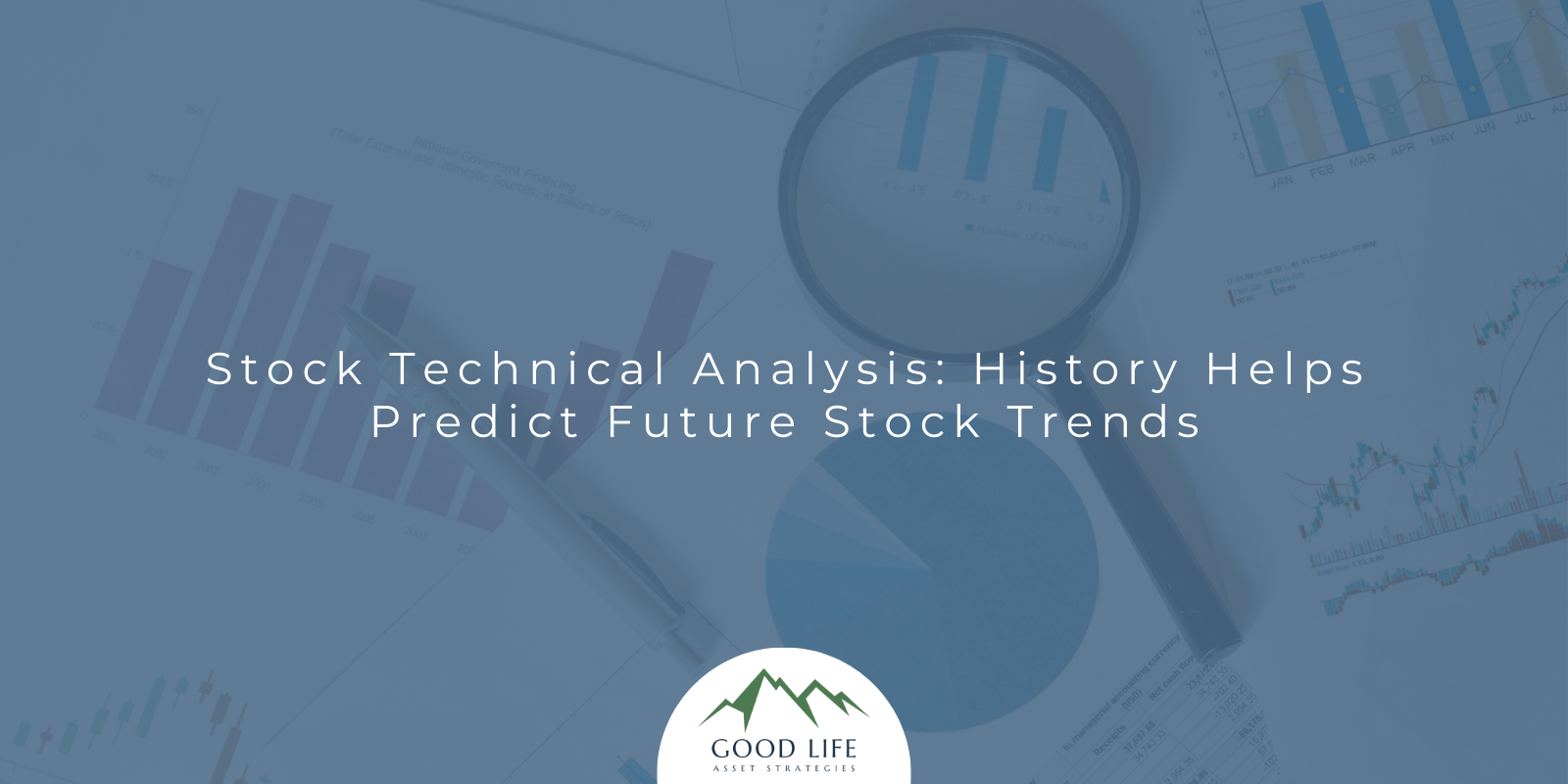- 817-864-8560
- justin@g-las.com
- Mon - Fri: 9:00am - 5:00pm

There are two main methods investors use to make investing decisions: fundamental and technical analysis. In our last article, we provided an overview of fundamental analysis. Today we will briefly discuss its counterpart, stock technical analysis.
Unlike fundamental analysis which dives into a company’s financial health and performance, stock technical analysis is all about studying historical price and volume data to predict future price movements. Think of it as analyzing the patterns and trends in the stock market like a seasoned surfer catching the perfect wave.
In years past, stock technical analysis had a bad reputation as “voodoo” investing. But over time, even the most fundamental investors, like Warren Buffett, have come to appreciate and utilize historical charts to time their investments and complement their fundamental approach.
The technical analysis starts by looking at stock charts. These visual representations show the price movement of a stock over time. We examine different timeframes, from short-term to long-term, to identify trends, support, and resistance levels.
Trends are like waves in the ocean. We want to catch a ride on an upward trend and avoid getting wiped out by a downward trend. We look for patterns like higher highs and higher lows (an uptrend) or lower highs and lower lows (a downtrend). These patterns give us an idea of the stock’s momentum.
Support and resistance levels are like invisible walls in the market. Support is a price level where the stock tends to stop falling and bounces back up. Resistance, on the other hand, is a price level where the stock tends to struggle to break through and may reverse its upward movement. These levels can help us determine entry and exit points for trades.
To enhance our analysis, we use technical indicators. These are mathematical calculations based on price and volume data. They provide us with additional insights into market conditions.
There are many indicators to choose from, like moving averages, relative strength index (RSI), and MACD (Moving Average Convergence Divergence). Moving averages smooth out price fluctuations and show us the average price over a specific period. RSI helps us identify overbought or oversold conditions, indicating potential reversals. MACD shows the relationship between two moving averages, giving us a signal of possible trend changes.
We also pay attention to trading volumes. High volume indicates strong market participation and validates price movements, while low volume may indicate a lack of interest and weak price action.
In all, here at Good Life Asset Strategies, we utilize twelve indicators. Of course, there are hundreds of others you can choose from, but in our quarter century of trading, we have found success with our process.
Now, remember, stock technical analysis isn’t foolproof. It’s like predicting the waves in the ocean, sometimes they behave unpredictably. We use technical analysis as a tool to make educated guesses, but there’s always a degree of uncertainty. But with thousands and thousands of hours of practice, technical analysis has provided us an edge over the average investor, and if you’re willing to spend the time and energy to learn, it can do the same for you.
Often we utilize the best of both worlds by employing both fundamental and technical analysis in our investing. Our proprietary active strategies are unique as we use fundamental analysis to identify stocks we feel have value and are worth buying, and we use technical analysis to provide us with the optimal time to make the purchase.
Before you make your next investment, it may serve you to look into learning about technical analysis. Beware there are lots of books on technical analysis out there, and most of them are not worth the paper they are written on, so feel free to reach out to us to get our recommendations.
The views expressed represent the opinion of Good Life Asset Strategies, LLC. The views are subject to change and are not intended as a forecast or guarantee of future results. This material is for informational purposes only. It does not constitute investment advice and is not intended as an endorsement of any specific investment. Stated information is derived from proprietary and nonproprietary sources that have not been independently verified for accuracy or completeness.